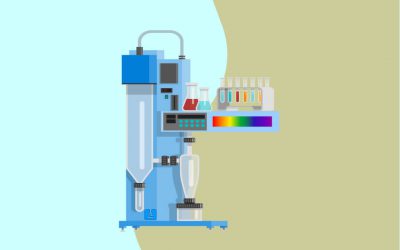We supply This lab with a full equipment range that provides students the basic techniques used in the evaluation and investigation of blood disorders. the lab system enables students to apply manual and automated CBC, which includes the red blood cell count, white blood cell count, and platelet count. also identify normal and abnormal disorders related to red cells and white blood cells and assessment of the clotting factors and the concept and measurement of PT, PTT, fibrinogen, and D-Dimer.
This is in addition to the basic techniques and procedures used in blood banking.
Emphasis is placed on quality control and quality assurance to make sure that donor blood is compatible with the recipient’s blood. Tests include ABO grouping and Rh typing, compatibility and cross matching, antibody screening and antibody identification, and the Coombs Test.
The lab equipment package enables students to apply many experiments and activities in hematology and blood banking such as:
- Determination of manual white blood cell count
- Determination of manual red blood cell count
- Manual determination of hematocrit and ESR
- Measurement of CBC using a fully automated cell counter
- Making and staining peripheral blood smear
- RBC morphology and WBC morphology, normal and abnormal
- Osmotic fragility test
- Sickle cell screening
- Determination of prothrombin time
- Determination of partial thromboplastin time and d-dimer
- Preparation of normal saline and 2-5{41f91c0ad50b137257b2be81a219124886d5a3cd48e4aabe17f1eb482e5857a6} cell suspension, washed RBC cells
- Preparation of check cells
- Test tube determination of abo grouping, both forward and reverse
- Determination of RH typing including du
- Performing crosshatching and compatibility testing
- Performing the antibody screening test
- Determining antibody titer and score
- Combs’ test, both direct and indirect
- Antibody identification, cell pane


